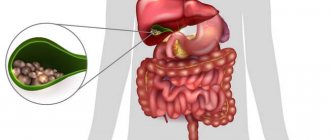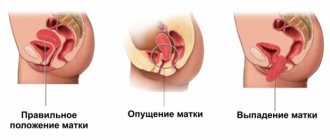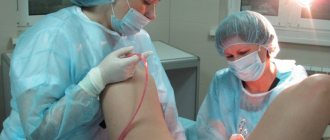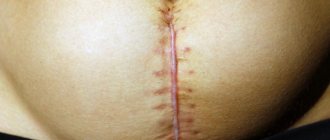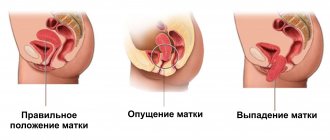Every day, a huge number of representatives of the fair half of the population are faced with various gynecological ailments, which are accompanied not only by inflammatory processes, but also by other extremely unpleasant symptoms. If a problem arises, the first thing a woman needs to do is consult a gynecologist as soon as possible. The specialist will carefully listen to all complaints, and then examine the patient on a gynecological chair using special medical equipment. After examination, a woman may be prescribed a set of diagnostic measures, which is aimed at identifying the main factor that provoked the onset of the disease. Based on the results of the diagnostic examination, appropriate therapy will be prescribed.
Today in the field of gynecology there are a huge number of techniques that are designed to eliminate various types of inflammatory processes and pathological changes that occur in the genital area. Rehabilitation is extremely popular.
Sanitation is a manipulation during which antiseptic treatment of the external genitalia, vagina and cervix is carried out with special medications that have a strong antiseptic effect. The procedure is widely used not only for the treatment of gynecological inflammatory diseases, but also for preventive purposes.
Indications
Sanitation of an intimate organ is performed in the following cases, such as:
- the presence of inflammatory diseases of the reproductive system;
- violation of vaginal microflora;
- performing surgery or spontaneous abortion;
- before intrauterine insertion of devices intended for contraception;
- carrying out antibacterial treatment resulting from inflammatory processes in internal organs;
- severe itching in the intimate organ area;
- preventive measures aimed at preventing the occurrence of diseases and infections of the vagina that are transmitted during sexual contact;
- after performing other gynecological procedures.
Doctors recommend sanitizing the vagina in the event of the development of pathological microflora or the presence of an increased risk of an existing infection entering the upper parts of the reproductive system, or more precisely, the cervical canal and uterus. The most common places where the inflammatory process is localized are the mucous membranes of the pelvic organ; therefore, the sanitation procedure is performed in the presence of conditions such as:
- inflammation of the vulva and vagina;
- violation of the integrity of the vaginal mucosa and some part of the cervix;
- candidiasis;
- bacterial vaginitis;
- chlamydia;
- mycoplasmosis;
- ureaplasmosis;
- papillomavirus infection.
This procedure is part of a complex therapy aimed at eliminating the inflammatory process. In addition, it is carried out for the purpose of prevention before various gynecological and surgical interventions performed on the organs of the reproductive system. With the help of sanitation, possible complications can be prevented.
Indications for treatment of the vaginal cavity
The average woman is faced with the need to cleanse the vagina before genital surgery. But in most cases, junior staff does this for her, since the victim herself is already under the influence of anesthesia.
Many gynecologists insist on the need to perform similar actions during pregnancy in order to protect against the possible development of a strong inflammatory process.
When a microbial agent travels from the vagina directly into the uterus after the placenta is separated, the likelihood of a septic process increases. The risks even extend to the baby, who must pass through the birth canal and at the same time pick up a dangerous infection.
The list of the most common prerequisites for prescribing sanitation includes several common diseases such as:
- bacterial vaginitis;
- sexually transmitted diseases;
- fungi;
- viral lesions;
- nonspecific viral conditions;
- local or large-scale inflammation of the gynecological organs located in the pelvis.
Sometimes manipulation improves the condition of some other anomalies associated with the reproductive system, but here you need to consult a specialist in each specific case separately.
If you do everything according to simple instructions, then the effect will not take long to appear even in severe cases of the disease. This is confirmed by numerous reviews from patients who have experienced the effectiveness of the method.
The exact price of a course of therapy will directly depend on the duration of treatment, as well as the medications used in the treatment program approved by the gynecologist. Sometimes simple antiseptics, which are easy to find in any pharmacy, are enough.
Despite a whole bunch of medical indications, sanitation has several significant contraindications. Among them, pregnancy is especially highlighted, which, at the same time as the ban, is considered an indication.
The confusion is caused by the fact that for women in an interesting position it is allowed to use rinses, but using instrumental techniques is strictly prohibited.
Other, more understandable indications include:
- inflammation at the acute stage of the course;
- menses;
- uterine bleeding;
- allergic reaction to an antiseptic;
- high body temperature;
- general serious condition.
To avoid the possibility of encountering anaphylactic shock, it is enough to conduct an allergy test in advance on a safe area of the skin.
If it turns out that the body does not take pharmacological drugs, you can look for an alternative. This is ultrasonic cleaning, which is offered by many modern clinics.
To mitigate the risks of possible infectious infection, the preparatory stage before hysteroscopy, colcoscopy, and oncocytology is never complete without sanitation.
All three points provide for a detailed examination of the uterine cavity, where pathogenic microorganisms should not reach. Even standard installation of an intrauterine device does not occur without preliminary antiseptic treatment of the vagina.
When a woman, even if she is carrying a baby, is diagnosed with lesions of the genitourinary system, as happens with ureaplasma, the course of treatment will not be complete without sanitation.
Especially pregnant women should pay increased attention to personal hygiene in the early stages, as well as in the third trimester. For many expectant mothers, it is in the period from 34 to 36 weeks that Candida awakens.
MORE ABOUT: Falls during pregnancy - Pregnancy
It is prohibited to suppress his vital activity using systemic methods, such as taking antibiotics or other medications, due to the likelihood of harming a young family member.
Vaginal sanitation is carried out in the following situations:
- The presence of inflammatory processes in the vaginal cavity (vaginitis);
- Development of nonspecific bacterial, viral or fungal diseases of the genital organs;
- Inflammation of the uterus;
- Presence of sexually transmitted infections;
- Carrying out colposcopy;
- Preparation for planned gynecological surgery;
- Disturbances of vaginal biocenosis;
- Carrying out radio wave coagulation, diathermocoagulation;
- Installation of intrauterine contraception (installation of an IUD);
- Preparation for labor;
- Performing surgical termination of pregnancy;
- When diagnosing pathologies of the cervix (oncocytology);
- Performing surgical manipulations on the uterus (conization, amputation, biopsy);
- Preparation for separate diagnostic curettage of the uterine cavity, laparoscopic, laparotomic, plastic and vaginal surgeries (in order to prevent infectious complications in the rehabilitation period);
- Carrying out hysterosalpingography and hysteroscopy.
Also, the vaginal sanitation procedure is carried out during pregnancy. Often in the third trimester of pregnancy, women may develop candidiasis, caused by a weakened immune system.
Sanitation during pregnancy
There are a huge number of opinions regarding this procedure immediately before labor. Previously, such a medical procedure was carried out for all expectant mothers before childbirth, based on the fact that the baby did not become infected with anything during the mother’s genital tract. But it was found that this procedure helps to suppress the natural microflora of the vagina in healthy women. For this reason, sanitation is now performed only for women in labor who have clinical indications for it. Thanks to this manipulation, it is possible to prevent infection of the fetus during labor. In some cases, sanitation may be prescribed during pregnancy. The main indication for its implementation is the presence of urogenital infection. The procedure is also relevant in case of an increased risk of penetration of various pathogenic and harmful microorganisms into the uterine cavity. It should be noted that during the third trimester, fungi belonging to the genus Candida begin to actively grow and multiply in the expectant mother’s vagina. At this time, a woman is strictly prohibited from taking systemic medications due to the fact that they can cause swelling of the mucous membranes and lead to damage to the birth canal. In order to eliminate the problem and prevent the baby from becoming infected at birth, the mother in labor undergoes sanitation before childbirth.
Sanitation after removal of the obstetric ring
After removing the pessary, it is recommended to sanitize the vagina before childbirth.
In cases where a pregnant woman has developed candidiasis or inflammation of the vagina in the last few weeks, this procedure is considered mandatory. The purpose of sanitation is to cleanse the vagina and birth canal from pathogenic bacteria, fungi, and microbes for the period when the child will pass through them at the time of birth. Thanks to this procedure, the likelihood that the newborn will be infected is minimized.
The sanitation procedure consists of treatment with antifungal, antimicrobial, antibacterial suppositories. They are inserted into the vagina. Treatment usually lasts a week.
There is a more expensive, but less troublesome way to clean the birth canal and remove mucus and microorganisms from it. This is ultrasound sanitation. The method is quite gentle. Thousands of air bubbles are formed in the birth canal when exposed to ultrasound. They gently cleanse the vagina.
https://youtu.be/P7RZblaGANY
Usually, soon after removing the pessary, labor begins, and then childbirth. Then the woman needs to undergo further treatment after the birth of the child. If she is not breastfeeding, more radical treatments may be considered.
Contraindications
Despite the fact that the procedure has a number of positive aspects, it also has contraindications for use. It is not advisable to carry out this gynecological manipulation in the following cases, namely:
- in the presence of allergic reactions;
- during menstruation;
- severe deterioration in the woman’s general condition.
It is also necessary to take into account the fact that some types of this procedure can only be used to treat infections that are in the attenuation stage or, conversely, have already become chronic. But the vacuum technique is used only during the period of active inflammatory process, and it is also not used during pregnancy.
In order for the effect of manipulation to be as effective as possible, the doctor must take into account all the characteristics of the female body.
When is it needed?
You need to sanitize in the following cases:
- inflammatory diseases of the gynecological area (,);
- disruption of the spectrum of normal vaginal microflora (bacterial vaginosis);
- before and operations on the cervix;
- before the introduction of intrauterine contraceptives;
- antibacterial therapy against the background of inflammatory processes in any organs;
- genital itching;
- prevention of vaginal infections, including sexually transmitted diseases;
- after gynecological procedures.
As preparation for childbirth, the procedure is performed during late pregnancy. Any inflammation reduces the elasticity of the vaginal wall, increasing the likelihood of injury. The rate of restoration of damaged tissues is significantly reduced.
If a microbial agent enters the uterus from the vagina after separation of the placenta, a septic process may develop. A fetus passing through the birth canal may become infected.
Preparation
Before sanitizing the vagina, a woman must undergo a full range of all necessary examinations. First, you need to establish the nature of the process that has arisen in the organs of the reproductive system and assess all possible risks. Doctors recommend the following tests, such as:
- a blood test to determine the presence of antibodies to certain infections, as well as markers of inflammation;
- urogenital smear for microflora;
- collection of cells from the cervix to determine the presence of possible oncological pathologies;
- analysis of secretions;
- polymerase chain reaction;
- examination of the walls of the vagina and cervix using a special magnifying device - a colposcope.
Women in the third trimester are advised to get tested for sexually transmitted infections. If they are detected, the woman is prescribed vaginal sanitation.
Features of the procedure
You should know that before prescribing sanitation, a special study of the vaginal microflora must be carried out in order to identify the causative agent of infection. Only after this is the selection of an individual treatment method carried out. The type of medications used and the duration of treatment are determined exclusively by the attending physician.
It is allowed to carry out sanitation at home on your own, but the medications and rules of the procedure must be agreed upon with the doctor. Before using special preparations, hygiene procedures must be performed.
Rehabilitation activities are carried out over 2-3 weeks. After the destruction of pathogenic microflora and the removal of the inflammatory process, probiotics containing lacto- and bifidobacteria are prescribed. Only after a repeat study and receipt of positive test results indicating normalization of the microflora is it considered completed.
Sanitation involves local treatment with antiseptic drugs to eliminate infection or pathogenic microflora. This procedure can be carried out for the purpose of treatment or prevention. Vaginal sanitation is indicated for pregnant women preparing for childbirth, as well as women suffering from infectious gynecological diseases.
Vulvovaginal inflammatory processes are widespread, occurring in every third patient who comes to see a gynecologist. Infections are especially dangerous in pregnant women. Sanitation of the vagina is one of the ways to restore health, but in each case an individual selection of the procedure method is necessary.
This is the treatment of the vaginal and cervical mucosa with antiseptics. The procedure is necessary for inflammatory processes of gynecological organs, which can be caused by bacteria, viruses (and), fungi (), and protozoa ().
Inflammatory diseases of the uterus and ovaries can provoke a secondary inflammatory process in the vagina due to the penetration of discharge from the uterus. Any specific infectious lesion of the vagina involves two important points in therapeutic tactics - exposure to the pathogen and the use of nonspecific agents to restore the normal microflora of the genital tract.
Preparations for sanitation
All medications used for this manipulation must have the following qualities:
- act as quickly and effectively as possible;
- have a wide range of actions and actively eliminate harmful microorganisms;
- have a pronounced effect in the fight against protozoa;
- the increased activity of the drug should not be stopped by the presence of various types of secretions.
Antiseptic drugs are divided into several main groups:
- antiseptics that have a very narrow therapeutic effect (clindamycin, metronidazole);
- multicomponent preparations containing several useful components;
- drugs that have nonspecific effects.
At the present time, one of the universal methods that are used in the complex therapy of inflammatory diseases and surgical interventions is the sanitation of the vaginal cavity using the drug chlorhexidine. This product has a wide range of effects and helps normalize microflora. The positive side of this medication is that it inhibits the growth of lactobacilli. In addition to chlorhexidine, the drug Hexicon is also widely used. The drug is available in the form of suppositories that are used vaginally. Sanitation when using this medicine can be carried out at home.
Types of rehabilitation
Vaginal sanitation can be done in several ways. Today, the latest methods have appeared in the field of obstetrics and gynecology, which show high effectiveness in combating various infections of the reproductive system. In this regard, the list of used medicinal products has expanded significantly and includes such types of sanitation as:
- medicinal;
- vacuum;
- ultrasonic
Based on the results of all the necessary examinations and taking into account the individual characteristics of the woman, the gynecologist prescribes a sanitation method that will be used for therapy. The above-described methods of sanitation have their own characteristic features, but they have the same goal - the destruction of harmful microorganisms and the elimination of the resulting inflammation.
The sanitation procedure is not only very simple, but also completely painless. It is carried out in an outpatient setting. Certain aspects of therapeutic influence are available to patients at home.
Sanitation with medications
The basis of vaginal sanitation is the use of medications that directly affect the irritants of infection. In order to eliminate the inflammatory process that has arisen in the organs of the reproductive system, various medications are used, which should have properties such as:
- help ensure the fastest and most pronounced effect;
- have a high level of antimicrobial effects;
- do not provoke irritation of mucous membranes;
- actively influence regardless of the environment.
The above characteristics are inherent in various antiseptic drugs that are widely used in the field of gynecology. Antiseptic medications have various forms of production, namely:
- liquids intended for douching;
- suppositories for vaginal administration;
- pills;
- preparations in the form of creams.
The most popular drugs in this group are:
- Hexia;
- Hexicon;
- Benzylmetidyl;
- Miramistin;
- Fluomizin.
In addition to medications with a broad spectrum of effects that have antibacterial, antifungal, antiprotozoal and antiviral properties, drugs with a narrow focus are also used. These medications are available in combination form.
Vaginal sanitation with medications is a very common procedure and can be done independently at home.
Vacuum sanitation
This manipulation is performed using a medical vacuum device. The device produces vibrations that have a directional effect. During the procedure, medications are used that have a wide range of effects. The vacuum device helps remove dead and desquamated cells of the mucous membrane, while allowing deeper penetration of medicinal components into the inner layer of the epidermis. This type of sanitation allows you to wash out the existing infection and relieve inflammation. Manipulation is most often carried out in the presence of diseases caused by:
- mycoplasma;
- candida;
- chlamydia;
- VHF.
Ultrasonic sanitation (+video)
Ultrasound sanitation is a completely harmless and painless procedure. Thanks to the use of ultrasonic waves, the mucous membranes of the cervix are completely cleansed of pathogenic microorganisms. During the process, the death of pathogenic infections occurs under the influence of ultrasound. This manipulation allows you to more thoroughly clean the cervical organs of the reproductive system from viruses and bacteria due to the fact that with its help antiseptic medications penetrate into the most difficult to reach places. It is strictly forbidden to use the ultrasonic sanitation method in the presence of bleeding, as well as when menstruation occurs.
Sanitation can be carried out not only in a medical institution, but also at home. If the procedure is performed at home, all medications used must be recommended by a doctor.
In order to completely eliminate the problem, it is necessary to carry out manipulations for several weeks. At the end of the course, the woman is prescribed probiotics in the form of vaginal suppositories and pills for oral use. With their help, positive microflora are populated with lactobacteria and bifidobacteria. In addition, it is also recommended to take vitamin and mineral complexes. If a woman follows all the recommendations of her doctor, she will be able to completely forget about the inflammatory processes of the reproductive system. At the end of therapy, the woman must be examined again, the results of which can confirm the complete absence of pathogenic microorganisms in the cavity of the intimate organ.
How is the treatment carried out?
After appropriate preparation, radio wave sanitation of cervical erosion takes no more than a few minutes. The procedure takes place on an outpatient basis and is painless, however, if the patient’s pain threshold is low, a preliminary local anesthetic is required. Often, an American-made Surgitron device is used for radio wave sanitation. There is no direct contact of the device with the affected area. Thanks to the gentle targeted effect, not a scab, but a thin film is formed at the site of pathologically changed areas of the epithelium. After treatment, the patient does not need hospitalization.
Upon completion of the procedure, the patient is recommended to abstain from sexual activity for a period of 10 days to 4 weeks (at the discretion of the doctor - based on the individual characteristics of the body), physical activity, lifting weights, swimming in open reservoirs and pools, visiting saunas and baths. A shower is recommended instead of taking a bath.
